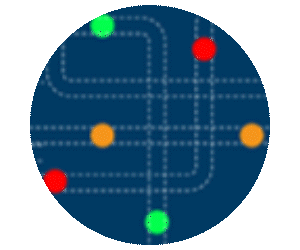The South Florida Water Management District oversees water resources for more than 9 million residents, from Orlando to the Florida Keys.
That means monitoring water quality, especially in Lake Okeechobee, the largest freshwater lake in the state and the 10th largest lake in the country. That’s no small task.
“My staff is about 75 Ph.D. scientists in various disciplines,” says Sean Sculley, chief of the applied science bureau in the SFWMD’s Water Resources Division. “We were concerned about the amount of time they were spending manipulating data, just getting the data from various sources together so that they could start looking and exploring what the data was trying to tell them.”
In partnership with Google Public Sector, SFWMD is leveraging geospatial data and analytic tools to be more efficient and effective in its monitoring and remediation efforts.
Click the banner below to get customized content by becoming an Insider.
Analyzing Environment Data Can Be Time-Consuming
The district generates around 380 annual reports, with a big focus on the recurrent hazardous algal blooms in Lake Okeechobee. In managing the 730-square-mile lake, the district has struggled to acquire and analyze the environmental data needed to drive effective action.
“The amount of work they have to do is very challenging. It’s a very manual process,” says Franco Amalfi, Google Cloud’s head of sustainability strategy for the global public sector.
“A lot of the data they use comes from satellites, and they have to download it, they have to calibrate the data, remove shadows and do a lot of preparation on it. And there’s so much of it. There are people who spend almost the majority of their time just looking at pictures, comparing pictures of before and after, which is very challenging and time-consuming,” he says.
Google’s cloud-based tools offer a way forward.
Google Applications Automate Data Collection
The district is implementing Google’s Climate Insights for natural resources. Built by Google in partnership with Earth-insights provider Climate Engine, it’s a suite of capabilities driven by the geospatial platform Google Earth Engine.
Google Earth Engine collects more than 75 petabytes of data from satellite imagery. “We take that data and combine it with remote sensing data that the district can produce itself,” Amalfi says. “Then we bring that into BigQuery, the same platform Google Search uses to power the analytics, to create the insights. From there, we apply AI and analytics to generate the insights needed to make decisions.”
In addition to historical data, the system is constantly ingesting new information, and the district is able to weave in its own data sources as well. Collected from the field, that data “is also critical to this science,” says SFWMD CIO Duane Piper. With the Google platform, “we can put it all in one place and easily churn through it to get various insights.”
Through Google’s BigQuery, a serverless multicloud data warehouse, the district is able to make use of predefined algorithms to make sense of all that data.
“We can apply these algorithms without having to start from scratch. It gives us a real jump start, and we ultimately end up spending our time analyzing the results, not trying to figure out ‘Where do I get my data from?’” Piper says. “Google has the power for us to process large amounts of data, and that’s what gives us the benefit.”
Click here to learn more about cloud and IT modernization.
Water Management Officials Share Lessons Learned
The Florida team has articulated a number of key best practices that can help guide other state and local entities seeking a better handle on their geospatial information:
- Plan ahead. “We asked Google for a reference architecture and we did a lot of planning up front. We designed how it was going to integrate into our environment,” Piper says. “It really helps to have security and your internal staff part of the project up front, designing the access methods. We did that, and it helped us be successful and deliver a lot faster.”
- Support training. “The technology has evolved, with new programming languages, machine language and AI,” Sculley says. “Google made training available to a dozen or so of my staff. We’ve engaged in the first of four training sessions, and we’re not done.”
- Consider time management. “For my staff, their plates were full before we began this engagement with Google,” Sculley says. “It was important for them to know that they were authorized to make time for this, to participate and to get the most out of this.”
EXAMINE: Which cloud strategy is right for state and local agencies?
Smart Water Planning Benefits from Interagency Partnerships
It’s also important to get high-level buy-in when undertaking a major modernization effort.
SFWMD Executive Director Drew Bartlett “was personally involved in presentations early on with the Google team. His direction and support helped to make it happen,” Sculley says.
“We also formed a good partnership with the Florida Department of Environmental Protection, which provided us funding for this initial development,” he says. “Between DEP and the water management district, the state of Florida truly is committed to this.”
SFWMD hopes to have the system fully operational in time for this year’s algal blooms, which typically start in the spring, and Scully points to a number of other potential use cases on the horizon.
“The coastal ecosystems section in my bureau also experiences algal bloom issues, and they have staff that will be learning how to take advantage of this platform,” he says. The system could also be used to track the status of vegetation in support of more effective stormwater management efforts.
At Google Public Sector, Amalfi says other states could also benefit from this technology. The problem of algal blooms “exists in pretty much every state in the United States, so this is a very repeatable use case,” he says.
“Agriculture is another area where we can use satellite imagery to be able to monitor changes in landscape,” he says. “We can look at water availability and water use. We can also look at the built world, the physical infrastructure. We can use satellite imagery to understand changes to roads, bridges and so on. We need to understand the climate risks associated with that infrastructure as we plan for the future.”














